Maia Dykstra (REU 2022)
Holly Suther (MESP)
Sophie Boyd (MESP)
Ivy Arden (REU, 2021)
Cristina La (REU 2021)
Sierra Bartlett (REU, 2019)
Mia Melamed (REU, 2017)

Mia came to SPMC after her freshman year at Kapiolani Community College. As an avid surfer, Mia was strongly interested in marine biodiversity and organismal interactions. She spent her summer addressing a fundamental question about the behavior of common periwinkle snails (Littorina sitkana) found on local shores and feed during low tide. It had been assumed that the snails found their algal foods by randomly bumping into them. However, Mia experimentally showed that snails could detect airborne volatile compounds released by algae and use these chemicals to orient toward them. She also found that some algae are more likely to be found by snails when stressed. Mia presented the results of her research at the American Society of Limnology and Oceanography meetings.
Katey Williams (REU and WWU undergraduate, 2017)
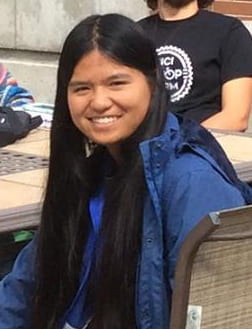
Katey was already a Shannon Point regular when she became a participant in SPMC’s summer Research Experiences for Undergraduates program. She first came to Shannon Point at the beginning of her freshman year as a WWU Marine Science Scholar. After spending time at the lab working on an eelgrass project with Dr. Sylvia Yang, Katey decided to spend an entire summer at the lab working on a research project. She was accepted into SPMC’s REU Program and, along with Dan van Hees, an MESP alum and Ph.D. student at the University of Western Australia, conducted a study to look at the effects of light levels and airborne signaling molecules on the production of natural products by the intertidal seaweed Fucus distichus. Katey will presented her research results at the American Society of Limnology and Oceanography meetings in Portland this winter.
Kate Berreman (WWU undergraduate, 2017)
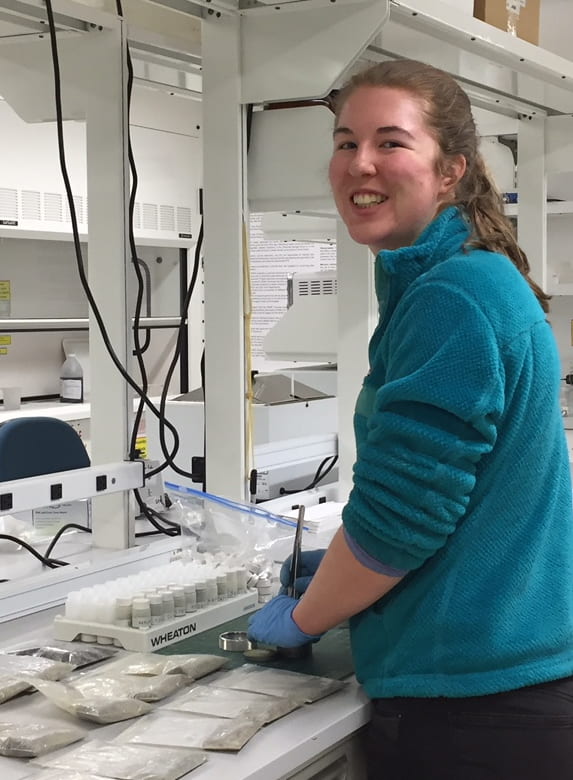
Kate got her first taste of marine research at SPMC when she spent two weeks at the lab before her freshman year as a Marine Sciences Scholar. During her sophomore year at WWU, Kate joined a project initiated by Huxley graduate student Jennifer Hahn that looks at the nutritional quality and contaminants of local seaweeds that have historically been used as foods by indigenous peoples. Kate’s part of the project involved measuring concentrations of alginate and fucoidans in seaweeds collected from sites throughout the Salish Sea. The natural products that Kate measured are biologically active and have antioxidant, anti-inflammatory, anti-allergy, anti-tumor, anti-obesity, anticoagulant, and antiviral properties. Kate’ s results will provide a better understanding of the variability of these compounds in seaweeds harvested on beaches in Washington and British Columbia.
Charlie Christenson (WWU undergraduate, 2016)
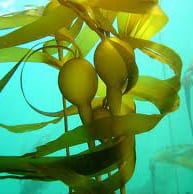
Charlie, an Anacortes native and Environmental Science major, joined the team recently to help out with a study of nutritional quality and contaminants of local seaweeds that have historically been used as foods by the indigenous peoples in the Salish Sea region. He has been analyzing polyphenolic concentrations in three species of seaweeds from over forty sites collected by graduate student Jennifer Hahn. The study is a collaborative project involving participants from multiple departments at Western Washington University, local tribes, and state and federal agencies. Charlie’s work will help provide information about site-specific differences in the nutritional value of these seaweeds and basic information about the biochemical responses of seaweeds to contaminants.
Mandy Chan (REU, 2016)
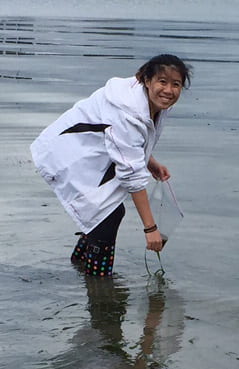
Mandy traveled across the country from Emory University in Atlanta to spend a summer at Shannon Point as a participant in SPMC’s REU program. She was particularly interested in applying her knowledge of chemistry to ecological questions. When she learned about our local Lacuna snails that alter their teeth in response to their diet, she decided that she wanted to work on identifying the molecule in their diet that causes the switch in radular morphology. Working in collaboration with Dr. Dianna Padilla from Stony Brook University, Mandy conducted a series of experiments that demonstrated that the inducer is a polar compound produced by benthic microalgae. Although we don’t yet have an identity for this chemical signal, Mandy’s work was a significant step forward in narrowing down both the source and type of molecule that causes this morphological change.
Lauren Sutton (WWU undergraduate, 2015)
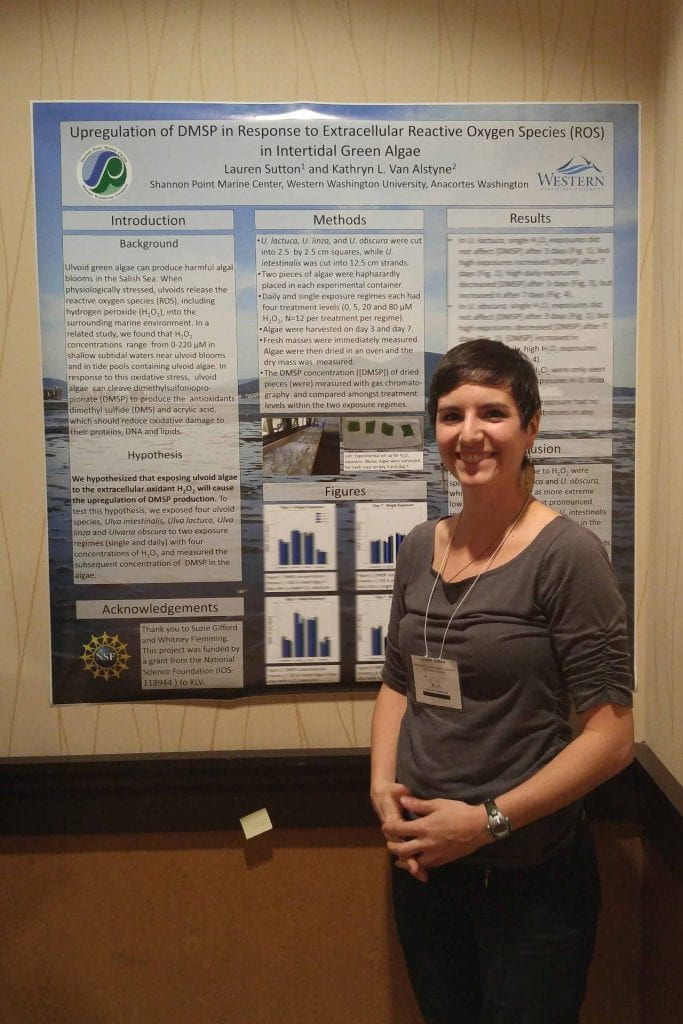
After earning a degree in anthropology, Lauren, an avid sea kayaker, decided that she needed to know more about marine biology, so she went back to school to do a second bachelor’s degree at the Huxley College of the Environment. For her internship at Huxley, she has been working with us on a project examining how marine plants respond to reactive oxygen species (ROS) in their environment. This work follows up on research by a previous graduate student who discovered that ulvoid algae release ROS into the water following oxidative stress. Lauren has discovered that ROS act as waterborne signaling molecules that cause increases in DMSP in some species of algae at ecologically realistic concentrations. She plans to present her research results at the Western Society of Naturalists meetings in Sacramento. Her research results elucidate a new mechanism by which environmental stresses affect the ability of marine plants to alter their biochemistry so that they can better handle additional physiological stresses.
Giovanna Tomat-Kelly (MIMSUP, 2015)
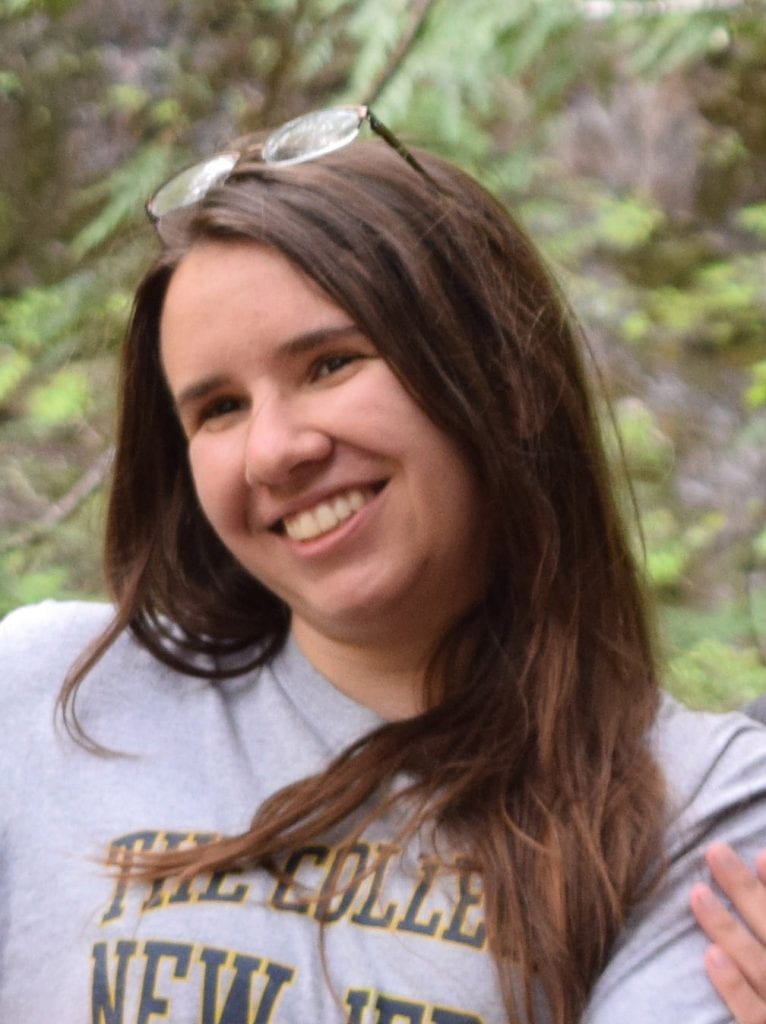
Gio traveled from the College of New Jersey to be part of the last cohort of Shannon Point MIMSUP students. For her research project, she looked at herbivore responses to green seaweeds that have been exposed to airborne dimethyl sulfide, which is released when the algae encounter environmental stresses. Her research results indicated that some herbivores can detect changes in plant chemistry that occur after the plants are exposed to dimethyl sulfide, but others don’t seem to respond to these changes. Gio’s research helps provide a better understanding of the role of signaling molecules in marine communities.
And all the rest…
(*students who are co-authors on publications)
- *Katie Aloe
- *Katie Anderson
- Reuben Biel
- Natasha Borgen
- Nicolas Boye
- Adrianna Campos
- *Marianne Cataldo
- Lauren Chomziewski
- *Jenna Dohmann
- *Vincent Dominique
- *Janette Ehlig
- *Jean Flanagan
- Josh Galvan
- Alysssa Gehman
- Daniel Geller
- Nathan Geraldi
- Thomas Grubaugh
- Jason Hall
- *Elizabeth Harvey
- *Brianne E. Henry
- *Corrine Hicken
- Richard Hipschman
- Umi Hoshijima
- *Letise Houser
- *Cynthia Hustead
- *Laura Kearns
- Theresa Keates
- Elizabeth King
- *Anna Kirby
- *Lauren Koellermeier
- Christa Kohnert
- *James McCarthy
- Jennifer Middleton
- Monica Moritsch
- Amanda Neff
- *Anna Neill
- *Amorah Nelson
- Alexandra Nicely
- Ariana Ochoa
- Heather Ogden
- *Theresa Olsen
- Jasmine Park
- *Karen Pelletreau
- Amanda Rinehart
- Tiffany Robinson
- *Karyna Rosario
- Sandra Ryan
- Amanda Salas
- Elizabeth Sanchey
- *Monique Savedo
- Sandra Schleier Hernandez
- Neal Smith
- Ronesha Strozier
- Carly Steeves
- *Daniel van Hees
- Don Valentine
- Jessica Ward
- *Shauna Whitman
- *Amanda Winans
